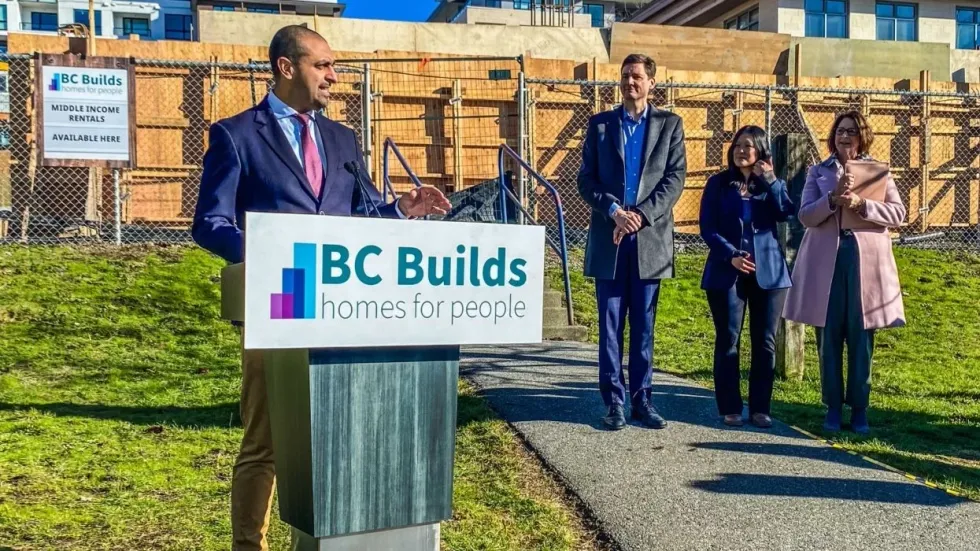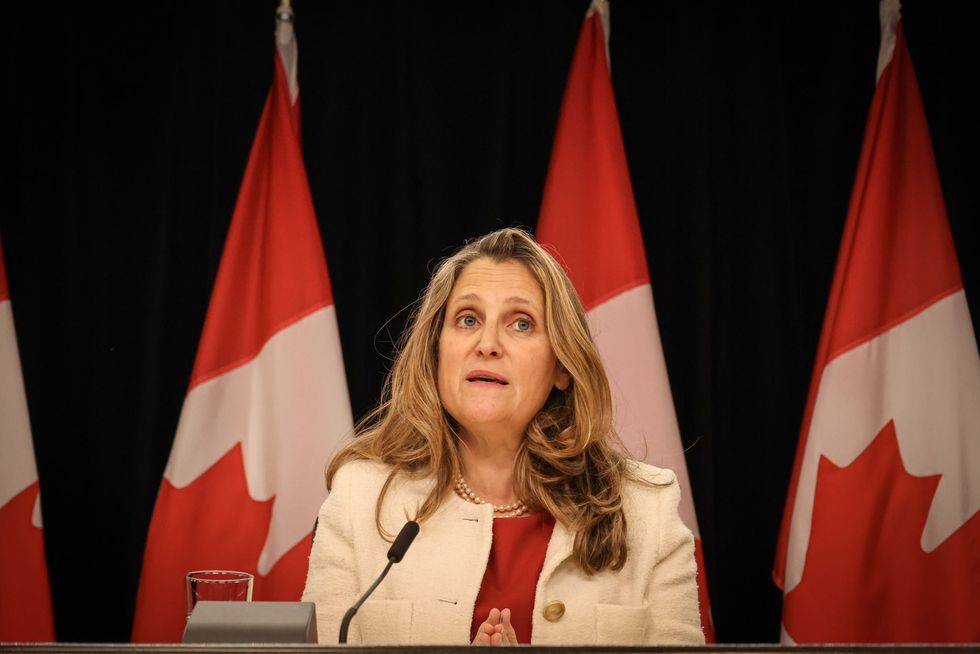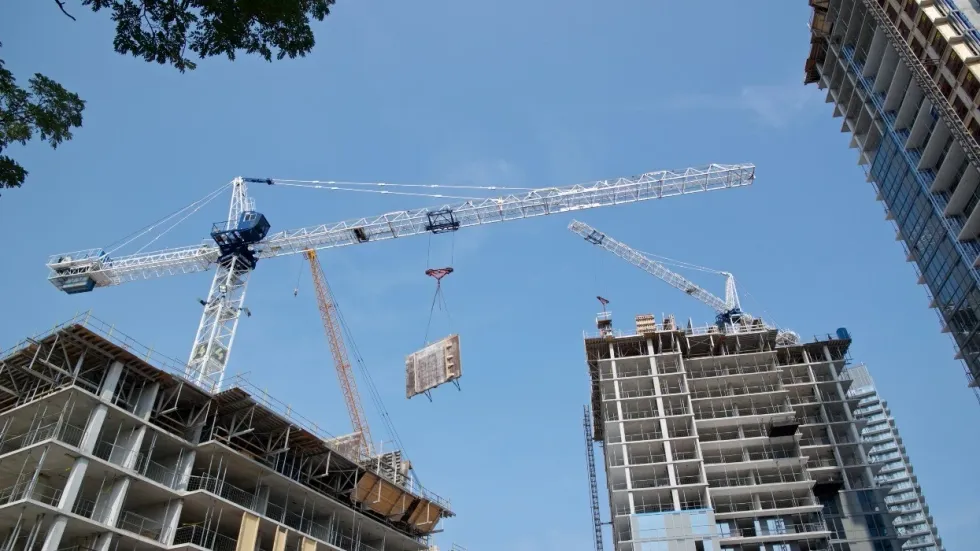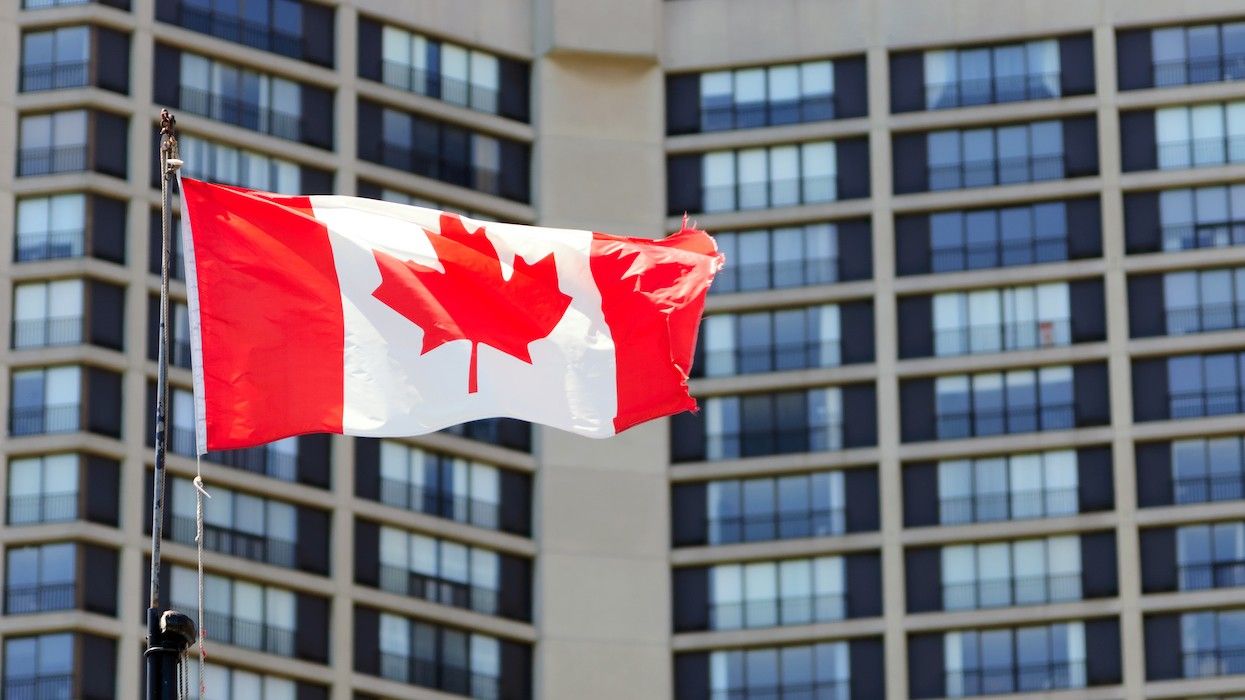There’s a lot of doom and gloom surrounding Canadian housing these days, and if you need figures to back that up, there are plenty. In fact, just last week, Habitat for Humanity reported that 84% of Canadians feel that buying a home is a luxury, while 88% of renters feel that owning a home is out of reach altogether. Meanwhile, for those resigned to rent, the conditions for many are habitually expensive and unstable.
These realities are not lost on the country’s policy- and change-makers, and today being National Housing Day — defined by Canadian Mortgage and Housing Corporation as “a day dedicated to raising awareness about housing and homelessness” — it’s as good a time as any to reflect on the fact that importance is being put on restoring housing affordability and stability for Canadians, an indisputably tall order.
From policy to funding to coalitions formed for the greater good, here’s what caught our attention over the past year.
100+ Municipalities Receive Housing Accelerator Funding
The Housing Accelerator Fund (HAF) was first unveiled as part of the Fed’s 2022 Budget as a way to incentivize local governments to implement structural housing reforms to increase supply. In order to make a competitive application for the funding, municipalities and communities have been required to lay out three- and 10-year housing goals that embrace things like ending exclusionary zoning and encouraging gentle density.
Although the Fund was officially launched in March 2023, the lion’s share of its disbursements have been announced over the past year. Some of the larger distributions since November 2023 include $471M to Toronto, $228M to Calgary, $115M Vancouver, $114M to Brampton, and $113M to Mississauga. As of August, just shy of the closure of the application portal for the second round of HAF funding, around $3.87 billion had been handed out through the $4 billion initiative — which was topped up by an additional $400 million dollars as part of Budget 2024 this past April.
The Government of Canada says the Fund could run until 2026-2027, and it’s worth noting, not everyone is in support of it. In recent news, Conservative Party Leader Pierre Poilievre, in his pursuit to be the next Prime Minster of Canada, has pledged to remove the goods and services tax on new homes sold for less than $1 million, and that would be at the direct expense of the HAF (as well as the Housing Infrastructure Fund), according to his party.
Feds Provide Housing Support For Asylum Seekers
Amid an influx of asylum seekers from the Ukrainians coming to Canada this year, municipal leaders pled with the federal government to step up their supports so that the incoming population could be safely and sufficiently housed — particularly over the brutal winter months.
At the beginning of February, their pleas resulted in the Government of Canada funnelling $362.4M into its Interim Housing Assistance Program (IHAP), which is designed to take some of the cost pressure associated with supporting refugee claimants off of individual cities and provinces. At that time, Immigration Minster Marc Miller confirmed that Quebec would be receiving $100M of IHAP the funding. In the coming days, the federal government revealed around $143 going to Toronto specifically through the same fund.
The pressures on housing (and other services and resources) poised by asylum seekers has yet to relent to date. In fact, Global News reported this week that there are nearly 250,000 refugee claims in the queue across Canada as of September 30, 2024. The outlet also described how cities like Ottawa and Mississauga, amongst others, are grappling with how to efficiently and adequately the mass amounts of newcomers.

Task Force for Housing & Climate Unveils "Blueprint" for Housing
In March 2024, the federal Task Force for Housing & Climate made a big splash when they released a Blueprint for More and Better Housing, which includes 40 policy recommendations for municipal governments, 50 for provincial governments, and 50 for the federal government — all to the end of building “more and better housing” that’s affordable, low-carbon, and climate-resilient.
Specifically, takeaways from the blueprint include legalizing density where there is infrastructure to support it, improving building codes to reduce costs and emissions, investing in factory-built housing that can be produced efficiently and at scale, and avoiding “high risk areas,” such as those that are vulnerable to extreme weather events.
Speaking with STOREYS shortly after the blueprint came to light, member of the Task Force for Housing & Climate, Cherise Burda, pointed to secondary suites as a good first step for government to encourage density. “It's just that right now it's not affordable for homeowners to do it, so we need to make this more cost-effective and we need better programs to scale this kind of housing,” said Burda. “It's a lot quicker to build a backyard suite than it is to build a 40-storey building. But it's about doing it at scale.”
There has been some movement on the secondary suites front. In October, the Feds announced a new insured mortgage refinancing product will allow eligible homeowners looking to add secondary suites to their properties to access up to 90% of their home value, including the value added by the secondary suites. The product will be available through lenders and insurers as of January 15, 2025.
BC Introduces Long-Awaited BC Builds, And First Projects
In February 2024, the Province of British Columbia, under Premier David Eby, launched BC Builds: an initiative geared at creating housing to serve middle-income earners. As you’d expect, this was in direct response to high interest rates, inflated cost of living, and a chronically short supply of affordable housing.
According to the Province’s announcement, the program leverages partnerships with non-profits First Nations to identify underused land for new housing, provide financing and funding, and accelerate the approval process. The Province set out a maximum grant of $225,000 per unit, and also noted that, in total, BC Builds will provide $2B in low-cost financing and commit $950M in grants. At the time that the program was launched, 20 sites had already been identified for development.
The new initiative got people talking — not just in BC, but on a national level. In fact, Minister of Housing, Infrastructure and Communities for Canada, Sean Fraser, told STOREYS a few months later that "BC is leading the country when it comes to housing policy” by demonstrating ambitions and a willingness to not just “play at the margins.”
Fraser said this as the federal government announced its own ambitions to launch a BC Builds-inspired program called Canada Builds as part of their 2024 budget, which combines federal low-cost loans with provincial and territorial investments to scale up construction on rental homes for the middle class.

The Canada Land Bank Launches, New Properties Added
In August 2024, we saw a BC Builds-esq model begin to play out at a national level when the Feds unveiled the Canada Public Land Bank: an inventory of federally-owned properties across the country that, rather being sold off to builders, will be leased out (long-term) with the intention of preserving that land for affordable housing development.
At the time that the Canada Land Bank was announced over the summer, 56 federally-owned properties, translating to over 750 acres of land, were identified for development, including 32 in Ontario, seven in Nova Scotia, six in Alberta, five in Quebec, two in British Columbia, two in the Northwest Territories, and one in both Saskatchewan and Manitoba.
And the program continues to expand. As of this week, there are 83 properties in the Bank, including 12 more across Alberta, New Brunswick, Nova Scotia, Ontario, Quebec, and the Yukon that have most recently been added. It now includes properties in nine provinces and two territories.
30-Year Amortizations Introduced For First-Time Homebuyers
Thirty-year mortgage amortizations have been in effect since August 2024, and have been touted, by proponents, as a move that will help young Canadians "qualify for a mortgage and afford their first home,” Deputy Prime Minister and Minister of Finance Chrystia Freeland said in a statement just before the new rule went into effect.
Right off the bat, however, the Feds put out some some stringent stipulations: the 30-year option is only available to insured first-time homebuyers who are purchasing new builds priced under $1 million. In addition, the buyer must be putting less than 20% down on a home upfront.
Those who support the move, such as the Canadian Homebuilders’ Association, have expressed that younger Canadians can now break into the housing market while paying less on a monthly basis. Critics, however, have lamented that the rules for qualifying are too restrictive to make a meaningful difference.
More recently, the Feds announced this fall that that they are increasing the $1 million price cap for 30-year amortizations to $1.5 million “to reflect current housing market realities and help more Canadians qualify for a mortgage with a downpayment below 20%,” and that they are expanding eligibility to all first-time homebuyers and to all buyers of new builds. The changes will go into effect next month: on December 15, 2024.

Feds Quietly Publish “Blueprint” For Renters' Bill of Rights
Establishing a new Renters’ Bills of Rights was another part of Budget 2024, and a “blueprint” for that was quietly published in September 2024, around the same time that updates to the 30-year amortizations came to light.
We don’t know all that much about what, specifically, the Renters’ Bill of Rights will bring to the table or when it will formally be introduced. What we do know is what it aims to achieve it a high level, which is “fair and well-functioning renting systems” that take into account four principles: “Ensuring everyone has a safe and affordable place to call home; fostering fairness and transparency; addressing inequity and discrimination; and, safeguarding the system.”
While the Bill is saying all the right things, one major criticism of it, thus far, is that “it lacks the strong federal direction needed to ensure that these critical protections for renters will actually be realized,” according to Sara Beyer, Manager of Policy at the Canadian Centre for Housing Rights, who was quoted in a statement from September. Instead, the Bill as it currently stands, calls on provincial and territorial governments to enforce the four principals outlined in the blueprint.
Developer Sector Stakeholders Across Canada Push Back Against DCs
There has been no shortage of chatter about development charges (DC) — or development cost charges (DCCs), as they’re referred to in Metro Vancouver — this past year, with development sector stakeholders across Canada making their cases to bring them down.
The recently-formed Coalition Against New-Home Taxes (CANT) has been one of the louder voices this year, and the group consists of around 30 developers (and counting) across Southern Ontario, including the likes of Alterra, MOD Developments, Stafford, Republic Developments, Devron, Form, and Harlo Capital. Their ask: the removal of HST on all new housing, as well as the reduction of development charges and the elimination of land-transfer tax on new homes in Toronto, according to a letter that began circulating in August.
"For every dollar of tax eliminated by any level of government from the cost of delivering new housing, we will immediately reduce the price of all homes we sell by the amount saved, dollar for dollar," the letter said.
Since that time, we’ve seen a similar initiative crop up on BC soil, with developers such as Wesgroup, Polygon, Anthem, Strand, and Edgar urging the Metro Vancouver Regional District to reconsider DCC increases.

Feds Offer Cost-Matching For Provinces To Address Encampments
Every so often, the word “encampment” starts to pop up on our newsfeeds. It’s a topic that never seems to stop being relevant, and picks up fresh urgency as temperatures begin to drop across the country. In September 2024, the Government of Canada announced a $250 million allocation from Canada’s Housing Plan to “address the urgent issue of encampments.” The Feds urged provincial and territorial governments to cross-match the $250 million.
Housing Minister Sean Fraser put this ask in a letter sent to provincial and territorial government leaders on September 18, 2024, and about a month later, he expressed in a statement that Alberta, Ontario, and Saskatchewan had not “formally responded.”
In lieu, Fraser said in his statement that the Feds will be approaching Calgary, Edmonton, Toronto, Regina, and Saskatoon directly “given their readiness to quickly adopt cost-matched responses.” According to reporting by the Toronto Star, Fraser’s office has already been in touch with officials in Toronto with same deal he offered Ontario.
Ontario Municipalities Pass Newfangled Renoviction Bylaws
Earlier this month, as a result of a 25-1 City Council vote, Toronto passed a new Rental Renovation Licence Bylaw designed “to curb bad faith evictions and protect tenants from the practice of renovictions.” The bylaw comes into effect on July 31, 2025, and when that happens, landlords will be required to issue a N13 Notice to formally end the tenancy. To obtain the notice, proof that the property owner has immediate building plans in place will need to be presented.
Renovictions have increasingly been an issue in Toronto, particularly as the rental market has become more competitive, rents have risen rapidly, and some landlords have opted to force standing tenants out under false presences in favour of new, higher paying counterparts.
The bylaw is a first-of-its kind piece of legislation in Toronto, but notably, a renoviction bylaw was pass in Hamilton this past January, and that’s set to come into effect on January 1, 2025. London has also recently passed a similar bylaw.





















